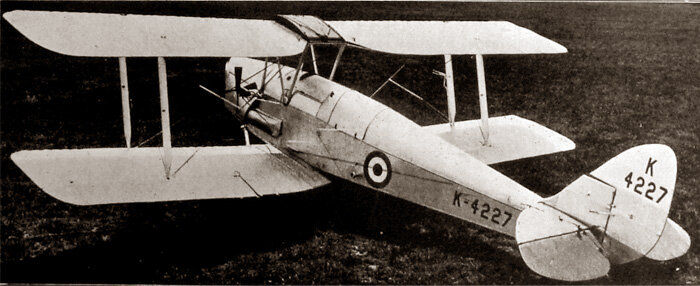Revolutionizing Home Inspections: The Role of Drones
- Cosmic Property Inspections
- Jan 17, 2024
- 3 min read
Part 1: A Brief History of Drones

Drones, also known as unmanned aircraft, have been instrumental in transforming various aspects of our world, from agriculture to warfare and everything in between. While we often associate these sophisticated flying machines with the modern era, their history stretches back further than one might think. In this blog, we embark on a historical journey through the evolution of drones, exploring their impact on the global landscape.
Unmanned aerial vehicles, or UAVs, are often considered a product of contemporary technology. Still, their origins can be traced back to the late 18th century. The Montgolfier brothers' hot-air balloons marked the first public demonstration of an unmanned aircraft in 1783, setting the stage for the drone revolution to come. Over time, drones have found their place in diverse applications, both military and civilian.
The early 20th century witnessed significant developments in drone technology, albeit in a limited capacity. During World War I, aerial reconnaissance photographs were employed by British forces, providing early insights into the potential of drones for military purposes. However, it was in 1917 that Charles Kettering's invention, the Kettering Bug, heralded the birth of military drones. This unmanned aerial torpedo made a lasting impact, carrying 180 pounds of explosives and foreshadowing the role of drones in warfare.

As we progressed into the mid-20th century, the concept of modern drones began to take shape. The De Havilland DH.82B Queen Bee, developed for pilot training, is often regarded as one of the first modern drones. This low-cost radio-controlled aircraft allowed for realistic training scenarios, bridging the gap between theory and practice. Simultaneously, radio-controlled boats and balloons demonstrated early forms of remote control technology, paving the way for the future of drones.
Fast forward to the latter half of the 20th century, and drones continued to evolve. The U.S. embarked on its drone program inspired by the success of the Queen Bee. Radio-controlled UAVs like the Curtiss N2C-2 played a role in this journey, further advancing the capabilities of these unmanned flying machines. Actor Reginald Denny's Radio Plane, designed for target practice, contributed to drone technology, illustrating their potential beyond the military sphere.
The 21st century ushered in the era of consumer drones, as technology became more accessible to the general public. Companies like Parrot and DJI introduced drones that could be controlled using smartphones, making aerial photography and recreational flying accessible to all. These developments paved the way for drones to transform industries beyond military applications, from agriculture and infrastructure inspection to delivery services.
In recent times, drones have demonstrated their versatility and societal value during crises such as the COVID-19 pandemic. They have played crucial roles in enforcing quarantine measures, monitoring social distancing, disinfecting public spaces, and aiding in medical supply deliveries.
The history of drones is a testament to human ingenuity and innovation. From the Montgolfier brothers' balloons to the sophisticated drones of today, these unmanned aircraft have continuously evolved and expanded their roles. As we look to the future, drones are poised to continue reshaping our world, presenting opportunities and challenges that will shape our society in ways we have yet to fully grasp.
Transforming Home Inspection Services with Drones
The integration of drones into home inspection services has led to a paradigm shift in how inspections are conducted:
Key Uses in Home Inspections:

Inaccessible Areas: Drones easily access steep roofs, tall chimneys, and other hard-to-reach areas, providing detailed imagery where traditional methods fall short.
Detailed Roof Inspections: Drones offer an up-close view of roofing materials, identifying subtle issues like cracked tiles, improper flashing, or worn shingles, which might be missed from the ground.
Thermal Imaging: Some drones are equipped with thermal cameras, drones can uncover hidden problems such as poor insulation, water leaks, and electrical faults, offering a more comprehensive assessment of a property's condition.
Advantages of Drone Technology:

Enhanced Safety: Drones significantly reduce the physical risks associated with climbing ladders or walking on roofs, ensuring inspector safety.
Improved Efficiency and Accuracy: Aerial views and detailed imaging lead to more accurate assessments, enhancing the overall quality of home inspections.
Cost and Time Effectiveness: By reducing the time needed for manual inspections, drones streamline the inspection process, leading to cost savings for both inspectors and clients.
Challenges and Considerations:
Operational Limitations: Weather conditions and flight restrictions can impact drone operations. It's crucial to plan inspections with these factors in mind.
Professional Responsibility: Operating drones requires a certain level of skill and professionalism. Regular practice and adherence to safety protocols are essential.
Client Education and Transparency: Educate your clients about the benefits and limitations of drone-assisted inspections to set realistic expectations and foster trust.
Conclusion: The advent of drone technology in the home inspection industry marks a significant advancement, offering safer, more efficient, and comprehensive property evaluations. As this technology continues to evolve, staying abreast of the latest developments and maintaining a commitment to ethical and responsible use will be key to leveraging drones for optimal service delivery in home inspections.

Comments